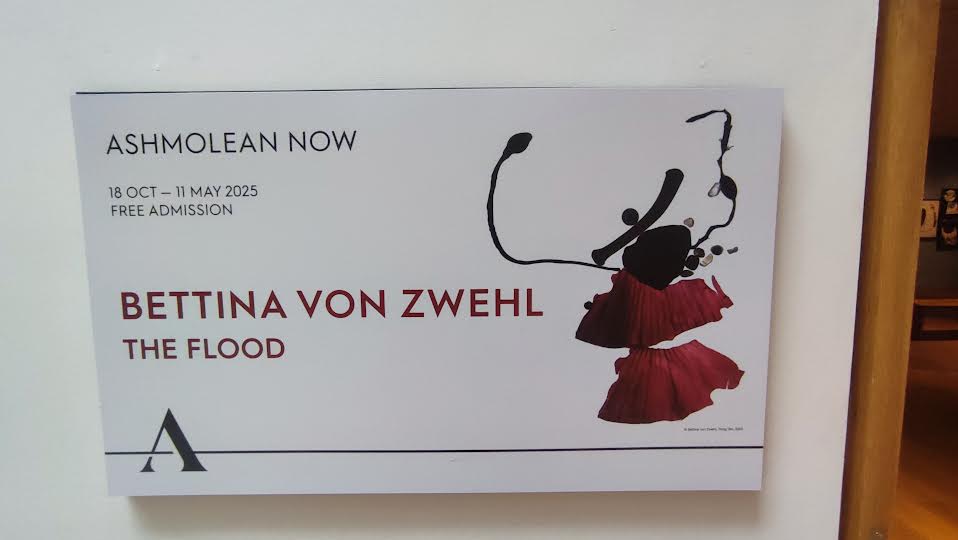Oracles, Omens and Answers - Bodleian Library - Review
★ ★ ★ ☆ ☆
The second exhibition on my whistlestop tour was to be found just next door in the ST Lee Gallery of Weston Library. Curated by M. Aroney and D. Zeitlyn, 'Oracles, Omens and Answers', had more floorspace to play with, and used it to introduce interactive elements to their exploration of divination across time and cultures.
 |
| Image via CCTdigital.com |
Upon entry, you are immediately greeted by a carnival-esque wheel which, when spun, presents you with a number. Corresponding numbers hidden in certain cabinets turned the whole exhibition into a playful act of divination. The numbers, when found, were attached to oblique horoscope style predictions. The wheel, however, was completely stiff, not spinnable. Though, for the sake of participation, let's imagine that I got given the number 6.
 |
| Image via New Scientist |
Throughout the exhibition, different displays present
material evidence of different forms of divination, from cartomancy to
astrology and all in between. Divination is presented without any snide
critiques, calling attention to its use, rather than its effects. The curators
make the astute comment that we often turn to such methods in times of strife,
or as tools of introspection and reflection. Of note, they specifically use the
term "vibrant technologies" when describing the various divinatory
methods.
Now, as for the objects themselves, some are rather
uninteresting, used instead to draw attention to certain subtopics. For
instance, a poster for Groundhog day is used to talk about forecasting, and a
red Miracle Fish - the kind found in a Christmas cracker - to talk about
intersections of divination and play.
Others, however, are amazing inclusions. An ornate armillary
sphere, much like those seen across the road in the History of Science Museum.
Oracle Bones. A particular favourite of mine was the illustrated book of
predictions from William Lilley, who foretells - alongside a hellish printed
image - a great fire in the year of 1666. This prediction, we learn, gets
Lilley into hot water, as he is accused of starting the Great Fire of London
when his prediction comes to pass.
The star of the exhibition is the work on spider divination
- or Nggam - a practice attributed to the Mambila people of Cameroon.
Professor Zeitlyn, co-curator, is reputedly an initiated spider diviner, and
the quality of his research shines through this part of the exhibition. A short
film plays, opposite which a wall of dried leaves hang - looking distinctly
like playing cards. They are each pierced in turn with various configurations
of holes, some mirrored, some asymmetrical. The leaf-cards are chosen by either
a spider or a crab, and each contain different readings.
 |
| Image via nggamdu.org |
Now, an interesting wrinkle cropped up when I was corroborating the information on Nggam. A website (https://nggamdu.org), designed by Tomas Saraceno, allows one to purchase a spider reading for between €380 - €460. Professor Zeitlyn is part of this project. He holds a role in engaging the customer in formulating their initial question, and in collaborating on the final reading. It is unclear whether Zeitlyn takes a cut from this, but, if so, surely that is a slight conflict of interest regarding platforming Nggam in his exhibition? As I found this out after visiting, I don't know whether conflicts of interest were available to the exhibition visitor. Since this exhibition is on until April 27, if I get the chance to revisit it, I will update accordingly.
Back to the exhibition at hand, I have to respect its open-handedness.
It offers no critique on the actuality of the results of divinity and speaks to
the concept of divination being important even when actively not followed (a
particular favourite theme of mine). Plus, cultures from across the world are
considered in the same regard throughout the gallery. There is no sense
whatsoever that any culture's methods of divination are treated in higher or
lower regard - which shouldn't be that remarkable but considering the legacy of
British institutions in hierarchising beliefs, and heavy-handed labelling of
practices as uncivilised or archaic, it is nice to see its absence here.
I do have a couple of critiques, however. I wasn't fond of
the take on Tarot. A panel states, "the point is to free the process from
human intervention so the cards can accurately reveal answers to your
questions". As someone who reads tarot for friends from time to time, this
doesn't ring true. The cards, to me, are simply jumping off points to
effectively engage in a non-systematic form of talking therapy, and the reader
holds a lot of power over the direction the conversation takes.
Following on from this, I couldn't identify much of a
critique of the practice of divination as a whole. Surely it is pretty key idea
that divinatory practices can and have been used to manipulate people who desperately
want to be told certainties or given direction, often for financial gain of the
diviner. Maybe I was too tired, and simply didn't spot it, but the very
accepting stance of the gallery seemed to prohibit any genuine critiques of the
practice. The manipulative side of divination could have been elevated
more.
Finally, the interactive elements seemed discordant. In a
pretty neatly designed gallery with some genuinely exciting displays - notably
the centrepiece spider divination - the inclusion of an 'interactive comedy
game' set in Elizabethan England, featuring mature humour not suited to younger
visitors, felt very out of place.
Criticisms aside, I liked this exhibition. The use of space
was elegant, the objects were on the whole interesting, I learnt something new,
and I was impressed by the pancultural open-mindedness. I would like to revisit
here with a fresh mind. Especially since I forgot to find what my number 6
corresponded to.
'Oracles, Omens and Answers' is on display at Weston Library
between 6 December 2024 and 27 April 2025.



Comments
Post a Comment